Historical Overview: Jackson Avenue, Las Vegas at Its Height
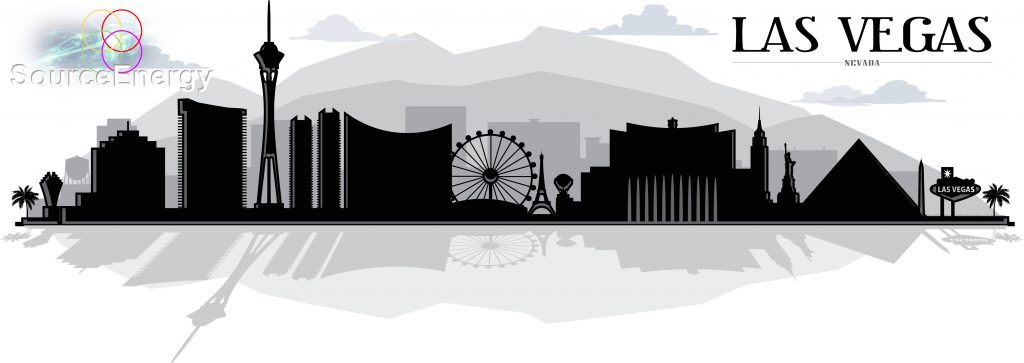
Introduction
Jackson Avenue, located in the heart of the Historic Westside of Las Vegas, was once a vibrant and thriving hub of African American culture, commerce, and entertainment. During its peak, particularly in the mid-20th century, Jackson Avenue was the epicenter of Black Las Vegas, often referred to as the “Black Las Vegas Strip.” It was a place where the African American community could gather, socialize, and enjoy a level of prosperity and cultural expression that was otherwise restricted by the segregationist policies of the time.
The Rise of Jackson Avenue
Economic and Social Hub:
- Businesses and Commerce: In its heyday, Jackson Avenue was lined with a variety of Black-owned businesses, including restaurants, bars, nightclubs, grocery stores, barber shops, beauty salons, and other essential services. These establishments were the lifeblood of the local economy, providing employment and services to the Westside’s predominantly African American population.
- Entertainment and Nightlife: The street was famous for its vibrant nightlife, featuring jazz clubs, lounges, and theaters that hosted performances by some of the most renowned Black entertainers of the era. Clubs like the Cotton Club, Brown Derby Club, and Ebony Club were legendary venues where artists such as Nat King Cole, Sammy Davis Jr., and Louis Armstrong performed, drawing crowds from across Las Vegas.
Cultural Significance:
- Cultural Expression: Jackson Avenue was more than just a commercial district; it was a cultural beacon for the Black community. It provided a space for African Americans to express their cultural identity through music, art, and social gatherings, fostering a strong sense of community and pride.
- Political Activism: The avenue was also a center for political activism. During the Civil Rights Movement, local leaders and activists would gather on Jackson Avenue to organize efforts to combat racial discrimination and to push for equality and justice in Las Vegas and beyond.


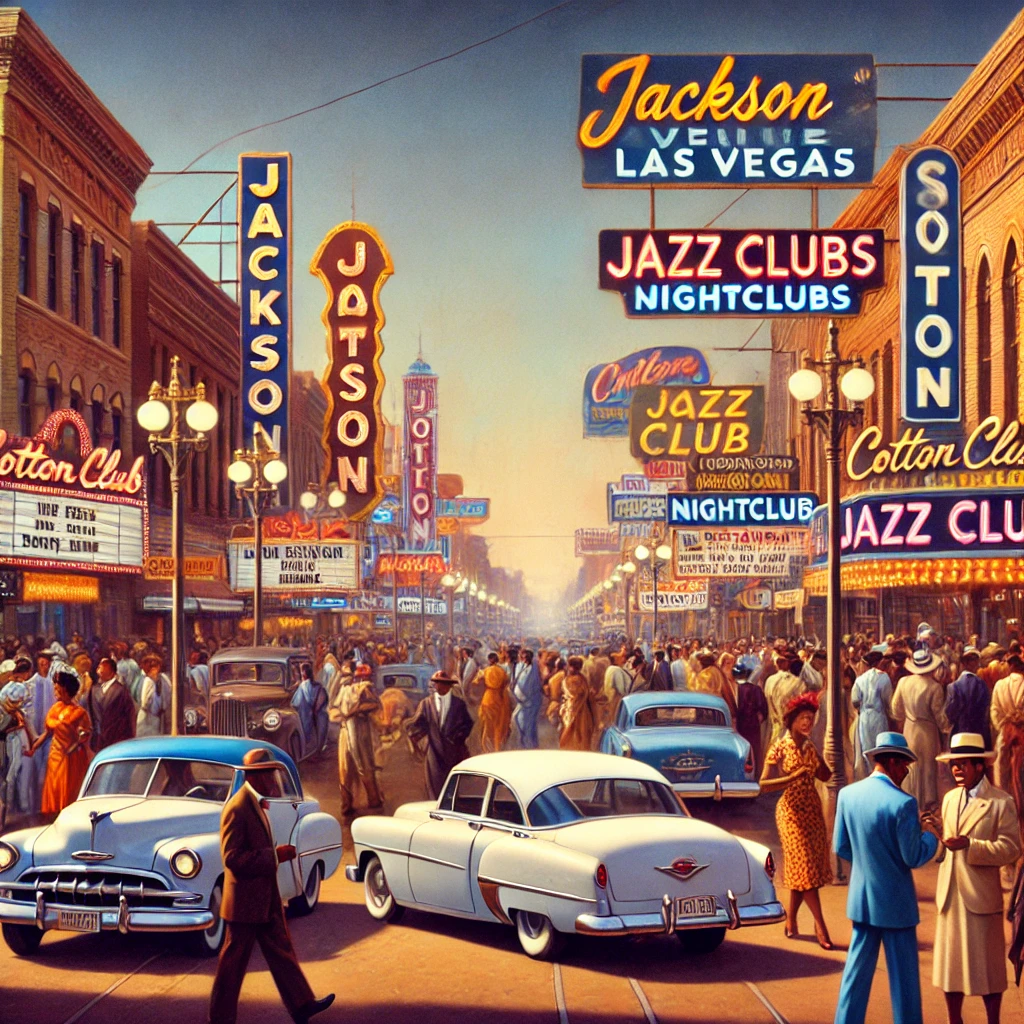
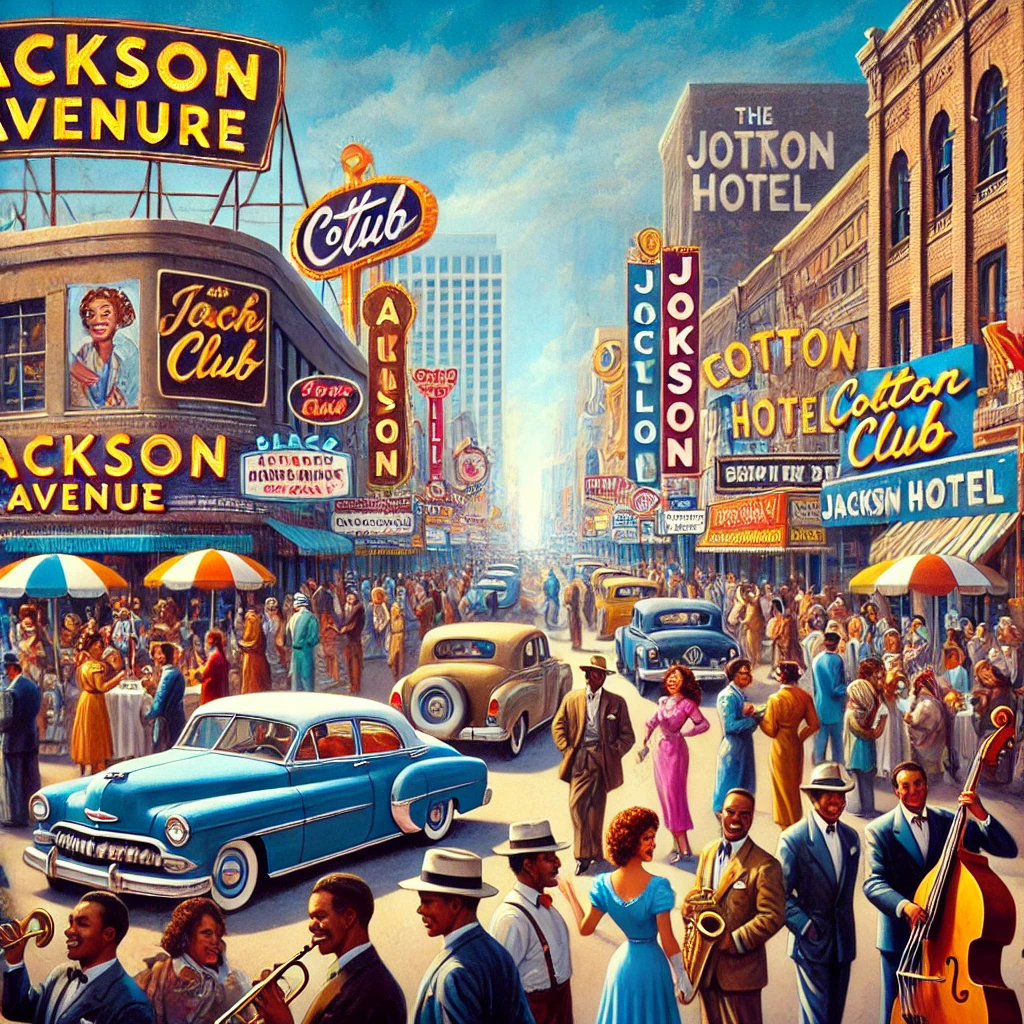
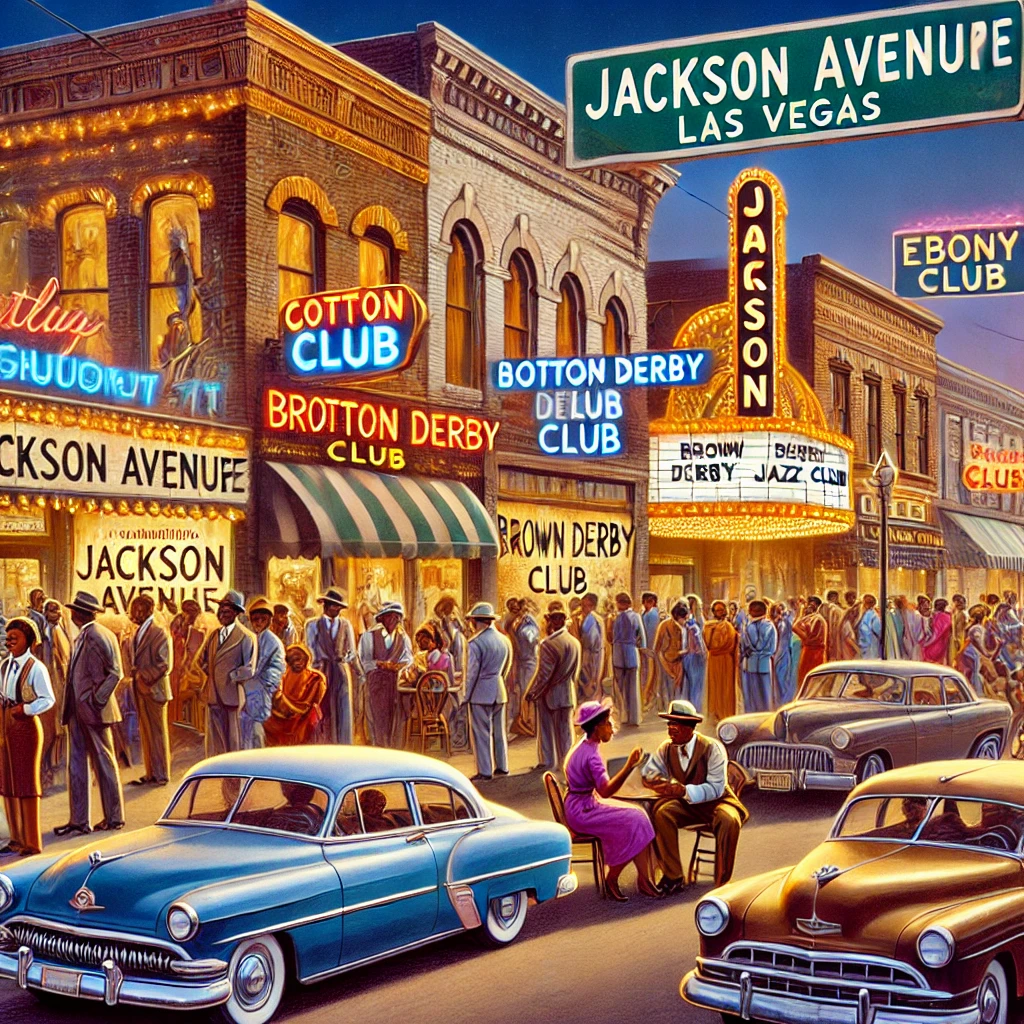
Key Figures and Institutions1
Influential Figures:
- Sarann Knight-Preddy: A pioneering businesswoman and the first African American woman to hold a gaming license in Nevada, Sarann Knight-Preddy was a significant figure on Jackson Avenue. She owned and operated the first casino on the street, which became a landmark in the community.
- Bob Bailey: Another prominent figure, Bob Bailey was a successful businessman and civil rights activist who owned several businesses on Jackson Avenue. He was instrumental in promoting economic development and advocating for civil rights in the Westside community.
Institutions and Landmarks:
- The Harrison Boarding House: This establishment was more than just a place to stay; it was a safe haven for Black entertainers who were barred from staying on the Las Vegas Strip due to segregation. It became a central meeting place for artists and performers.
- Westside Post Office: Opened in 1954, the Westside Post Office on Jackson Avenue was one of the few federal institutions in the area and served as a symbol of the community’s growing prominence and self-sufficiency.
The Decline and Legacy of Jackson Avenue
Economic Challenges:
- Integration and Urban Renewal: The gradual desegregation of Las Vegas in the 1960s and 1970s led to many African Americans moving away from the Westside, seeking opportunities in other parts of the city. This migration, coupled with urban renewal projects that often displaced Black businesses, contributed to the decline of Jackson Avenue as a commercial hub.
- Economic Decline: As the city expanded and the focus shifted to other areas, many businesses on Jackson Avenue struggled to survive. The once-thriving street began to experience economic stagnation, with numerous establishments closing their doors.
Enduring Legacy:
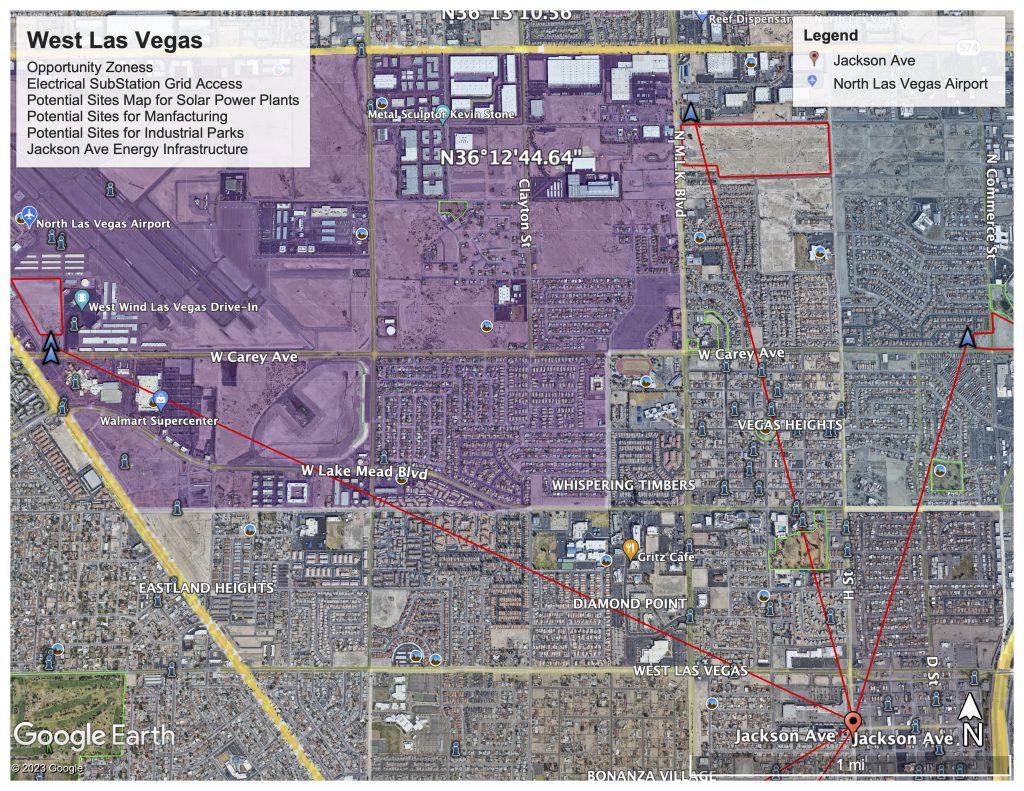
- Cultural Heritage: Despite its decline, the legacy of Jackson Avenue lives on. The street remains a symbol of the resilience, creativity, and entrepreneurial spirit of Las Vegas’s African American community. Efforts to revitalize the Historic Westside and honor its cultural heritage are ongoing, with community leaders and organizations working to preserve the history of Jackson Avenue.
- Revitalization Efforts: Recent initiatives, including those led by SourceEnergy Group and the Jackson Street Alliance, aim to restore Jackson Avenue to its former glory. These efforts focus on celebrating the area’s rich history while promoting economic development, cultural tourism, and community empowerment.
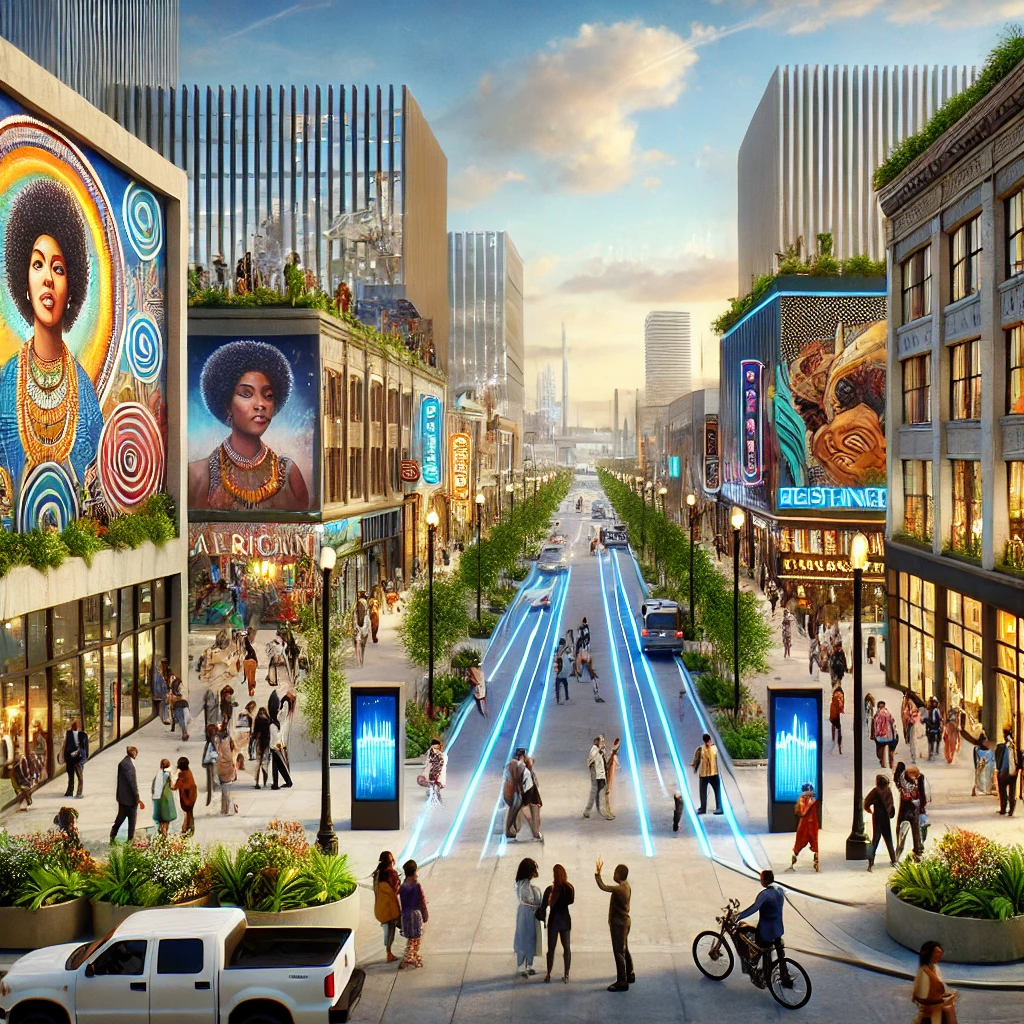
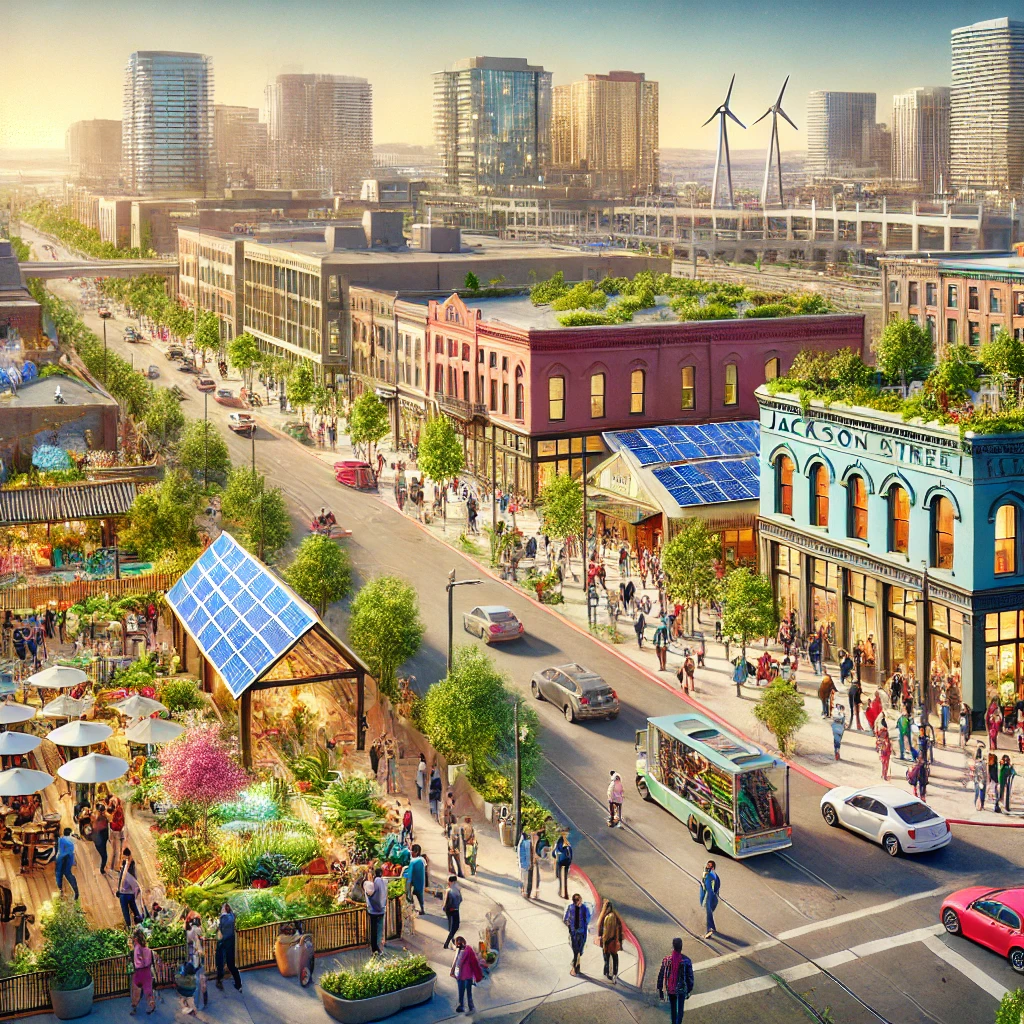
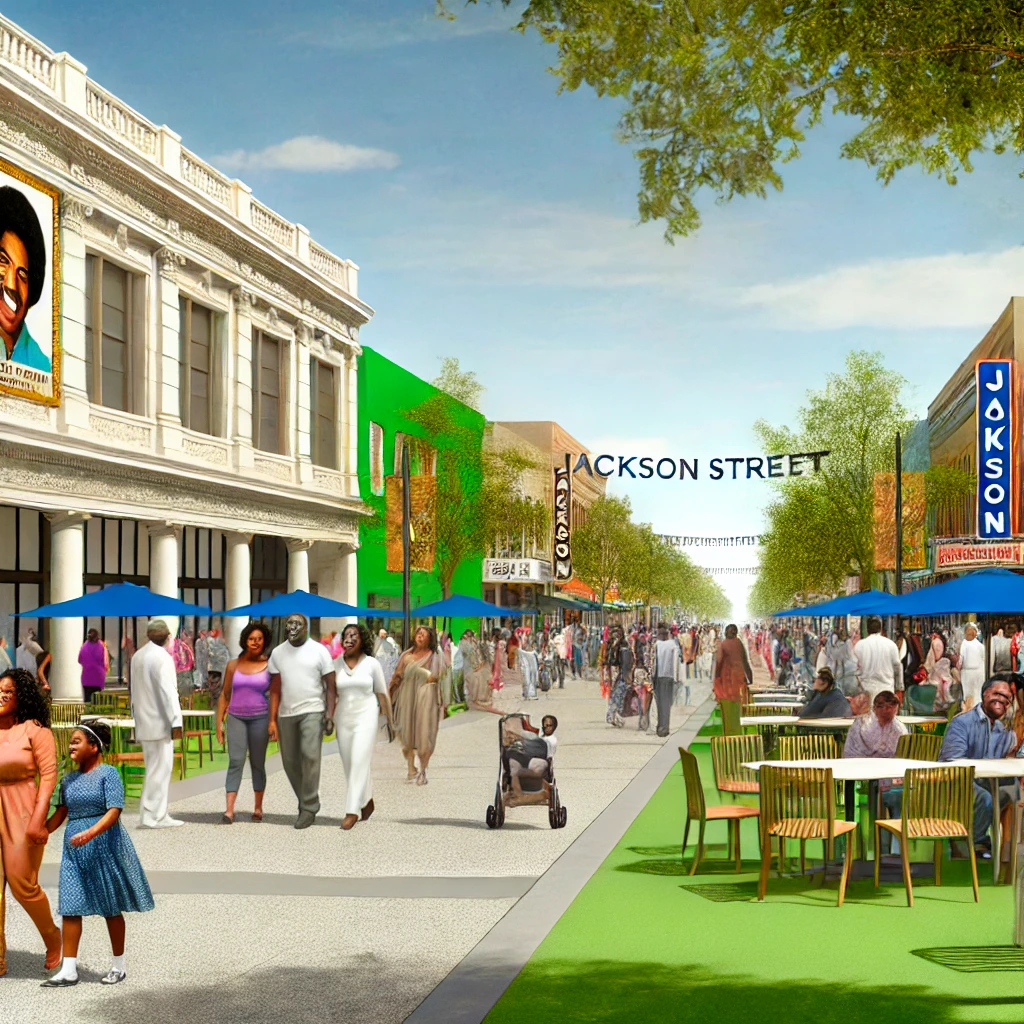




Conclusion
At its height, Jackson Avenue was the beating heart of Black Las Vegas—a place where culture, commerce, and community converged. It was a street where the African American community could thrive despite the challenges of segregation, and where some of the most influential Black leaders and entertainers of the time left their mark. Today, the legacy of Jackson Avenue serves as a reminder of the vibrant history of the Historic Westside and the ongoing efforts to restore and revitalize this important cultural landmark.

- Expanded List of Key Figures and Institutions on Jackson Avenue
Key Figures
1. Reverend Marion D. Bennett Sr.
Role: Religious Leader and Civil Rights Activist
Contribution: Reverend Marion D. Bennett Sr. was a highly influential pastor and civil rights leader in the Westside community. As the pastor of Zion United Methodist Church, he was deeply involved in the Civil Rights Movement and played a key role in advocating for desegregation and equal rights in Las Vegas. His church often served as a meeting place for civil rights activists and community leaders.
2. Alice Key
Role: Civil Rights Activist and Journalist
Contribution: Alice Key was a pioneering African American woman who used her voice as a journalist and activist to fight for civil rights and social justice in Las Vegas. She was instrumental in challenging racial segregation in the city and worked closely with the NAACP. Her efforts helped to break down barriers for African Americans in various sectors, including housing, employment, and education.
3. Charles I. West
Role: Physician and Community Leader
Contribution: Dr. Charles I. West was the first African American physician in Las Vegas and a prominent figure on Jackson Avenue. He was not only a medical professional but also a strong advocate for the health and welfare of the African American community. Dr. West was actively involved in civil rights and worked to improve healthcare access and conditions for Black residents in the Westside.
4. Jimmy Gay
Role: Businessman and Nightclub Owner
Contribution: Jimmy Gay was a well-known businessman and nightclub owner on Jackson Avenue. He owned and operated the Cotton Club, one of the most famous nightclubs on the street, which hosted performances by legendary Black entertainers. Gay’s club was a central venue for nightlife and entertainment in the African American community and contributed to the vibrant cultural scene on Jackson Avenue.
5. Anna Bailey
Role: Community Organizer and Advocate
Contribution: Anna Bailey was a dedicated community organizer who worked tirelessly to improve the living conditions and opportunities for African Americans in the Westside. She was involved in various initiatives aimed at providing housing, education, and social services to underserved populations. Her efforts were crucial in strengthening the sense of community and solidarity on Jackson Avenue.
6. Dr. James B. McMillan
Role: Dentist and Civil Rights Leader
Contribution: Dr. James B. McMillan was the first African American dentist in Las Vegas and a key figure in the civil rights movement. He was a founding member of the local NAACP chapter and played a significant role in challenging discriminatory practices in Las Vegas. Dr. McMillan’s advocacy extended beyond healthcare to include housing, employment, and education rights for African Americans.
Institutions and Landmarks
1. Moulin Rouge Hotel and Casino
Overview: Although located a short distance from Jackson Avenue, the Moulin Rouge Hotel and Casino played a significant role in the social and cultural life of the Westside community. Opened in 1955, it was the first racially integrated hotel and casino in Las Vegas, attracting both Black and white patrons and entertainers. The Moulin Rouge became a symbol of racial progress and a cultural landmark for African Americans in Las Vegas.
Legacy: Despite its short-lived operation, the Moulin Rouge is remembered for its cultural impact and its role in fostering integration in Las Vegas. It remains an iconic symbol of the struggle for racial equality in the city.
2. Westside School
Overview: Established in 1923, the Westside School is one of the oldest schools in Las Vegas and served as a primary educational institution for African American children during the segregation era. Located near Jackson Avenue, the school was a cornerstone of the community, providing education and a safe space for generations of Black students.
Legacy: The Westside School has been preserved as a historic site and continues to be an important symbol of the educational struggles and achievements of the African American community in Las Vegas.
3. The Jackson Hotel
Overview: The Jackson Hotel was one of the few accommodations available to African American travelers and entertainers who were barred from staying on the Las Vegas Strip due to segregation. Located on Jackson Avenue, the hotel provided lodging and hospitality to many Black performers who were headlining shows in Las Vegas but had no other place to stay.
Legacy: The Jackson Hotel played a crucial role in supporting the careers of Black entertainers and fostering a sense of community on Jackson Avenue. It is remembered as a key institution in the history of African American Las Vegas.
4. Carver House
Overview: Carver House was another significant lodging establishment on Jackson Avenue that catered to African Americans during the segregation era. It was known for providing a welcoming environment and was a popular spot for both travelers and locals.
Legacy: Carver House is remembered as a part of the network of institutions that made Jackson Avenue a safe and supportive space for African Americans during a time of widespread racial discrimination.
5. The Town Tavern
Overview: The Town Tavern was a popular nightclub and entertainment venue on Jackson Avenue. Known for its lively atmosphere, the Town Tavern featured performances by well-known Black musicians and comedians. It was a key destination for nightlife in the Westside and attracted a diverse crowd.
Legacy: The Town Tavern contributed to the rich cultural tapestry of Jackson Avenue, helping to establish the street as a major entertainment district for African Americans in Las Vegas.
6. First Church of God in Christ
Overview: The First Church of God in Christ was one of the first African American churches established on the Westside. Located near Jackson Avenue, the church served as a spiritual and social hub for the community. It was a place where residents could come together to worship, organize, and support one another.
Legacy: The church remains a significant institution in the Westside community, symbolizing the deep faith and resilience of the African American population in Las Vegas.
7. Berkley Square
Overview: Berkley Square was one of the first planned housing developments in the Westside, designed by renowned African American architect Paul R. Williams. Located near Jackson Avenue, Berkley Square provided modern housing for African American families during the 1950s.
Legacy: Berkley Square is a landmark in African American architectural history and represents the progress made in providing quality housing for Black residents in Las Vegas. It is listed on the National Register of Historic Places.
8. The Ebony Club
Overview: The Ebony Club was another famous entertainment venue on Jackson Avenue, known for hosting some of the biggest names in Black music and entertainment. The club was a popular gathering place for both residents and visitors, offering a space where African Americans could enjoy performances in a welcoming environment.
Legacy: The Ebony Club played a significant role in the cultural life of Jackson Avenue, contributing to its reputation as the “Black Las Vegas Strip” and helping to elevate the careers of many Black entertainers.
Conclusion
The expanded list of key figures and institutions highlights the rich and diverse history of Jackson Avenue during its height as a cultural, economic, and social hub for African Americans in Las Vegas. These individuals and establishments not only shaped the community but also left a lasting legacy that continues to be celebrated and preserved today. Jackson Avenue remains a symbol of resilience, creativity, and the enduring spirit of the African American community in Las Vegas.
SourceEnergy Group R&D ↩︎
